Jane Friedman's Blog: Jane Friedman, page 183
October 5, 2012
What Does It Feel Like to Have Your Book Banned?
Did you know Writing Down the Bones by Natalie Goldberg—one of the most popular books on writing of all time—was banned?
In honor of Banned Books Week, the good folks at Open Road Media have put together a video featuring authors whose books have been banned—plus celebrating censored favorites. If you don’t see the video appear below, click here to view.
Open Road has also created a Banned Books Week website featuring the stories behind a range of banned titles. It’s a visual delight—go check it out.
October 3, 2012
Kitchen Sink That First Draft
Lists of writing tips are always popular (and sometimes overdone), but Josh Swiller’s 12 tips in the latest Glimmer Train bulletin are a delight to read. Two of my favorite tips, directly quoted:
Kitchen sink that first draft. Throw every damn thing in there. If you aren’t sure something belongs, if you aren’t even remotely clear what the point of a certain tangent is—in it goes. It can help to do this draft with pen and paper, in poor handwriting, so you can’t be eying and judging what you’ve put down as you go along.
And throughout the process, please recognize and celebrate the fact that writing is completely ridiculous. At any moment—say when you’re agonizing over whether to use the word “recognize” or “understand” or even just the pedestrian “know”—at that moment, a single willow branch abounds with the glory of a thousand star deaths. Your own fingers typing away on the keyboard, in their fine motor control and patchwork unique-to-all-existence wrinkles, are the Grand Central Station of four billion years of evolution. Are your feet crossed at the ankles? Imagine that! Does it matter whether your obvious artistic brilliance is recognized and understood and known? It does not, brother. Drown your sorrows over this travesty in the dust motes dancing in the sunbeams or in your old dog’s sighs. Life is too short and too glorious for resentment.
Read the other excellent tips over at the Glimmer Train site.
Plus, check out these other essays on writing from the latest bulletin:
On Betraying Family by Louise Farmer Smith
Getting Outside by Hugh Sheehy
Keep Away by John M. Keller
Story Endings With Staying Power by Gregory Spatz
September 19, 2012
5 Free Services That Help You Build Author Platform
Today’s guest post is by Matthew Turner (@turndog_million). You may remember him from a previous post, 100 Tips to Alleviate Self-Doubt.
If there’s one word that fits perfectly with an author, it’s FREE. Here are five free services that can help build your author platform.
1. Twitter
Let’s get this one out of the way. It was always going to appear on the list, wasn’t it? I didn’t like Twitter at first. I didn’t think I would sign up, but eventually gave in to the Twitter Angels.
Can a writer live without Twitter? Yes, but you’ll miss out on the impact it can have. It’s a quick and easy way to interact with, find, and get on the radar of existing fans, future readers, and industry influencers.
Here are some articles to help you get started with Twitter:
Are Your Tweets Crap? (my post)
The Secret To Twitter That Can’t Be Taught (Jane’s post)
Writer’s Guide to Twitter by Debbie Ohi
2. Buffer
I have a serious love affair with Buffer. It allows you to automate and schedule your Tweets and Facebook messages. The main benefit of Buffer is how it spreads out your messages.
Now, be warned, automated marketing can be dangerous. However, if you approach it properly—as a way to keep your sanity during busy periods and to better time your messages—it’s a wonderful tool. If you rely on it solely, and never interact, you may start to look and sound like a bot on social media, which your friends/followers will be able to detect from a mile away.
Here are some articles for the Buffer Beginner:
How a Strategic Marketer Uses Buffer (my post)
How & Why I Use Buffer (Duct Tape Marketing)
A Month With Buffer (ProBlogger)
3. Evernote
If my love for Buffer is big, my love for Evernote is unhealthy. Writers need to stay on top of their information and be organized, which is a big part of creating a successful platform.
There are many tools, apps, and virtual notebooks to choose from, but for me it’s Evernote all the way. It allows you to link your laptop, tablet, and phone, and you have access at all times.
It’s free to start (you would have to use it a lot to need the paid version), easy to use, and has a host of accompanying apps. Here are some articles to get you started:
How I Keep My Author Platform Organised With Evernote (my post)
10 Tips For Using Evernote (ReadWriteWeb)
Evernote For Writers (Christopher Gronlund)
Capture Your Ideas With Evernote (Jeff Goins)
4. Mailchimp
This is an e-mail newsletter provider that Jane has often recommended, and I recommend it too. You can use MailChimp for free as long as you’re under 2,000 names; then you have to choose a pay plan. Find out more below:
7 Reasons Why Mailchimp Is Better (Author Media)
Getting Started With Mailchimp (MailChimp’s own guide)
Why We Use Mailchimp (WP Beginner)
5. Hootsuite
Rather than check each social media platform individually, keep Hootsuite open all day and have everything update before your eyes.
It’s not just efficiency, though—it’s the extra features too, such as tweet scheduling, campaign strategy, and analytics showing how effective your posts are. Find out more below.
How I Use Hootsuite (Marian Schembari)
How Hootsuite Can Help Busy Writers (Shari Lopatin)
Hootsuite Quick Start Guide (from HootSuite)
I’d love to learn about free services that you use. Please share in the comments.
September 18, 2012
Building Your First Website: Resource List
Note: This Thursday, I’m teaching an online class with Writer’s Digest: Create an Author Website in 24 Hours or Less for $79. For a tech class, this is a pretty good deal. For 2 hours, I step you through how to get a WordPress site up and running. After the live class is over, you have access to the recording for a year, so you can reference it as much as needed. I also take Q&A during the session and afterward (no question goes unanswered). Click here to sign up.
When writers ask me what the most important thing they should be doing to further their career—aside from write—it’s almost always start your own website. Even if you don’t consider yourself a tech person, services have advanced to the point where an average person can establish a site without knowing code, and without hiring professional help.
Should you start a site if you’re unpublished? I say yes, because you don’t want to tackle that learning curve at the moment you actually need the site. You’ll need and want the time to get comfortable with how you update the site and how it behaves—not to mention you’ll likely learn how to better structure and organize your site based on feedback. A website is never finished—it is a work in progress. Hopefully this is good news rather than bad. For more, read my earlier post, 3 Reasons to Have a Website If You’re Unpublished.
While there’s nothing wrong with hiring professional help to sort through the initial stages of establishing your website, make sure the result is something you can easily update yourself. This is why I recommend, without reservation, having a WordPress-based site. Even the most tech-averse person can usually handle updates on their own, as well as make basic modifications and upgrades. I also recommend WordPress because it’s open source, it’s frequently updated, and has a strong community of developers. (Side note: Many people ask me if Blogger is an OK substitute for WordPress. Blogger is not open source, it is blogging focused, and you never know what Google might do to it in the long run. It’s not a bad service, but it’s not as versatile and dynamic as WordPress.)
This is a long intro to a recommended resource list of my own posts, others’ posts, and general sites that can help you (1) establish your first website (2) maintain it successfully on your own.
Getting Started With WordPress
WP Beginner has some of the best step-by-step instructions, as well as more advanced material for longtime WordPress users. Check out their guide here if you’re completely new to WordPress.
HongKiat is a design & technology site that often posts about WordPress (e.g., best themes, common errors, best plug-ins, etc). Click here to view all their WordPress-related posts.
SmashingHub is similar to HongKiat. Click here to view all their WordPress-related posts.
Online Courses and Tutorials
My course this Thursday with Writer’s Digest (2 hours, live)
How to Launch a Self-Hosted WordPress Blog in 20 Minutes or Less by Michael Hyatt, an invaluable 20-minute screencast
Get Started Guide: Blogging for Writers — which links to 5 of my own brief screencasts for getting started with WordPress
WordPress.tv (WordPress official site), free
Lynda.com, per-month or per-year subscription required—but so worth it!
Beginner Books on WordPress
WordPress for Dummies
WordPress 24-Hour Trainer
WordPress: The Missing Manual (releases in October 2012; as with most tech books, getting an edition that was just published is very desirable!)
My Past Posts on Websites
Build a More Effective Author Website
Why You Should Add E-mail Subscription Service to Your Blog
The Big Mistake of Author Websites and Blogs
WordPress Plug-Ins: The Bare Essentials
To Learn About Your Readers, You Need a Site
What resources have you found invaluable in dealing with WordPress? Share in the comments.
September 17, 2012
EXTRA ETHER: Who Owns Your Tweets?
Update: Stories at DigitalTrends by Andrew Couts, and at The Hill by Brendan Sasso and Jennifer Martinez, point to potential near-term legislative action that could impact future attempts by authorities to gain access to social-media records without a warrant, as has occurred in the case of Twitter and the Occupy Wall Street protestor Malcolm Harris.
See Couts in two writes:
New bill prevents police from snooping your emails, chats, cloud files, without a warrant
Twitter turns over Occupy tweets to court: Why this matters
And see Sasso and Martinez in:
Senate bill would require warrant for email snooping
As Sasso and Martinez write:
Senate Judiciary Committee Chairman Patrick Leahy (D-Vt.) introduced legislation on Thursday that would require police to obtain a warrant before seizing emails or other forms of digital communication.
And from Couts’ writes:
If approved by the Senate Judiciary Committee in a markup scheduled for next Thursday (September 20), the proposed amendment will be attached to House Bill H.R. 2471, which passed the House late last year. H.R. 2471 seeks to update the Video Privacy Protection Act of 1988(VPPA), a bill that was also authored by Leahy.
Although under-reported at this point — and rather curiously so in connection with the “Twitter-Occupy” case that’s the subject of this Extra Ether — this committee effort could move to the full Senate after Thursday’s markup with the potential to directly affect future instances like the Malcolm Harris case discussed here, presumably across a wide range of social media.
Couts:
The bill would require law enforcement to obtain a probable-cause warrant before accessing all non-public Internet communications, including email, chat logs, and files stored in the cloud.
There is some very good discussion from Jane Friedman on this issue here, in our comments below, in which she asks about the status quo:
If we all use Twitter as a distribution service for our ideas/thoughts (as public as it may be), does that mean we relinquish all rights to that content just because we’ve stated it publicly?
Here is our original post:
Twitter handed over tweets from an Occupy Wall Street protester to a New York criminal judge on Friday after months of fighting a subpoena from prosecutors.
Joseph Ax’s straightforward account of the matter for Reuters — Twitter surrenders Occupy protestor’s tweets — is a good place to start, and not just because Reuters was the first to carry the word.
Writes Ax:
The company surrendered the micro-blogging posts to Manhattan Criminal Court Judge Matthew Sciarrino but they will remain under seal until another appeal by the protestor, Malcolm Harris, is argued next week.
That’s about as far as you can go in this story without some sort of emotional current beginning to swirl around the ankles of your consideration.

Malcolm Harris / Photo: The New Inquiry
Are we standing on good, solid ground here? Or is something — as the Occupy Wall Street (OWS) protestor Malcolm Harris maintains — being eroded?
Harris is a senior editor with the non-profit non-partisan The New Inquiry, which characterizes itself as “a space for discussion that aspires to enrich cultural and public life.”
Writes NetworkWorld freelancer “Ms. Smith” in Punch to user privacy as Twitter surrenders Occupy protester’s tweets:
Although Harris is only charged with disorderly conduct in connection with an October 2011 Occupy Wall Street protest on the Brooklyn Bridge, it’s a battle about constitutional rights.
That’s a workable description of the case from “street level,” if you will. Andy It’s certainly in line with how Harris seems to see it.

Andy Greenberg / Forbes
Forbes’ Andy Greenberg, in Twitter Forced To Hand Over Occupy Protestor’s Tweets It Sought To Protect, writes:
Harris told me earlier in the week that he hopes to set a legal precedent with his case “about the way law enforcement is able to use social media – either as a dependable source of intelligence or not. I want not,” he wrote. ”Part of the nature of the medium is that not everyone is who they say they are, not everything is literal…I don’t think Twitter is a good place to find legal evidence of anything.”
First, the background on the charge, People v. Harris, 2011NY080152.

Paloma Esquivel
Paloma Esquivel writes it up for the Los Angeles Times in As Occupy anniversary nears, Twitter gives up info on protester. (The Occupy Wall Street movement has its anniversary today, Monday, September 17.)
Harris was charged with disorderly conduct after his arrest at an Occupy protest last year on the Brooklyn Bridge, and prosecutors say his Twitter messages could show whether he was aware of police orders to stay on a pedestrian path.
Harris and other protesters — almost 700 were arrested in the bridge protest — said they believed they were allowed to use the roadway.
A New York Times account without byline puts a tighter spin on the interest of prosecutors in seeing Harris’ tweets. In Twitter Turns Over User’s Messages in Occupy Wall Street Protest Case, the Times’ piece says:
Manhattan prosecutors subpoenaed the records in January, because the messages could show that the police did not lead protesters off the bridge’s pedestrian path and then arrest them, an argument that the protester, Malcolm Harris, of Brooklyn, is expected to make at trial.

Jeff Roberts / Photo: GigaOM
Jeff Roberts at GigaOM picks up the narrative in Twitter turns over OWS tweets after threat from judge:
The case became a media sensation after Twitter notified Harris about prosecutors’ demands for his account. Harris then challenged the demand but, in a remarkable decision, Judge Matthew Sciarrino Jr., ruled that he had no standing because the tweets did not belong to him.
After Twitter stepped in on Harris’ behalf, Sciarrino issued another unusual decision that suggested people have little or no constitutional rights in what they publish on social media.
And then Roberts gets us to one of the most difficult parts of this issue, emphasis mine:
The case is significant because it is helping to define privacy and free speech in the age of social media. While tweets are by their nature public statements, Harris had deleted them. The issue of whether or not they are still public documents is an open question but the more pressing legal issue is over who owns them in the first place.
RT @Handmade Memories: Poems and Essays, 1997-2011.
Images: iStockphoto / Eduardo Luzotti
EXTRA ETHER: Twitter’s Occupational Hazard
Twitter handed over tweets from an Occupy Wall Street protester to a New York criminal judge on Friday after months of fighting a subpoena from prosecutors.
Joseph Ax’s straightforward account of the matter for Reuters — Twitter surrenders Occupy protestor’s tweets — is a good place to start, and not just because Reuters was the first to carry the word.
Writes Ax:
The company surrendered the micro-blogging posts to Manhattan Criminal Court Judge Matthew Sciarrino but they will remain under seal until another appeal by the protestor, Malcolm Harris, is argued next week.
That’s about as far as you can go in this story without some sort of emotional current beginning to swirl around the ankles of your consideration.

Malcolm Harris / Photo: The New Inquiry
Are we standing on good, solid ground here? Or is something — as the Occupy Wall Street (OWS) protestor Malcolm Harris maintains — being eroded?
Harris is a senior editor with the non-profit non-partisan The New Inquiry, which characterizes itself as “a space for discussion that aspires to enrich cultural and public life.”
Writes NetworkWorld freelancer “Ms. Smith” in Punch to user privacy as Twitter surrenders Occupy protester’s tweets:
Although Harris is only charged with disorderly conduct in connection with an October 2011 Occupy Wall Street protest on the Brooklyn Bridge, it’s a battle about constitutional rights.
That’s a workable description of the case from “street level,” if you will. Andy It’s certainly in line with how Harris seems to see it.

Andy Greenberg / Forbes
Forbes’ Andy Greenberg, in Twitter Forced To Hand Over Occupy Protestor’s Tweets It Sought To Protect, writes:
Harris told me earlier in the week that he hopes to set a legal precedent with his case “about the way law enforcement is able to use social media – either as a dependable source of intelligence or not. I want not,” he wrote. ”Part of the nature of the medium is that not everyone is who they say they are, not everything is literal…I don’t think Twitter is a good place to find legal evidence of anything.”
First, the background on the charge, People v. Harris, 2011NY080152.

Paloma Esquivel
Paloma Esquivel writes it up for the Los Angeles Times in As Occupy anniversary nears, Twitter gives up info on protester. (The Occupy Wall Street movement has its anniversary today, Monday, September 17.)
Harris was charged with disorderly conduct after his arrest at an Occupy protest last year on the Brooklyn Bridge, and prosecutors say his Twitter messages could show whether he was aware of police orders to stay on a pedestrian path.
Harris and other protesters — almost 700 were arrested in the bridge protest — said they believed they were allowed to use the roadway.
A New York Times account without byline puts a tighter spin on the interest of prosecutors in seeing Harris’ tweets. In Twitter Turns Over User’s Messages in Occupy Wall Street Protest Case, the Times’ piece says:
Manhattan prosecutors subpoenaed the records in January, because the messages could show that the police did not lead protesters off the bridge’s pedestrian path and then arrest them, an argument that the protester, Malcolm Harris, of Brooklyn, is expected to make at trial.

Jeff Roberts / Photo: GigaOM
Jeff Roberts at GigaOM picks up the narrative in Twitter turns over OWS tweets after threat from judge:
The case became a media sensation after Twitter notified Harris about prosecutors’ demands for his account. Harris then challenged the demand but, in a remarkable decision, Judge Matthew Sciarrino Jr., ruled that he had no standing because the tweets did not belong to him.
After Twitter stepped in on Harris’ behalf, Sciarrino issued another unusual decision that suggested people have little or no constitutional rights in what they publish on social media.
And then Roberts gets us to one of the most difficult parts of this issue, emphasis mine:
The case is significant because it is helping to define privacy and free speech in the age of social media. While tweets are by their nature public statements, Harris had deleted them. The issue of whether or not they are still public documents is an open question but the more pressing legal issue is over who owns them in the first place.
RT @Handmade Memories: Poems and Essays, 1997-2011.
Images: iStockphoto / Eduardo Luzotti
September 14, 2012
The Stephen King Guide to Marketing
Today’s guest post is by Jason Kong. You may remember him from an earlier guest post here at JaneFriedman.com: Are You Making This Marketing Mistake?
How does a writer become successful?
Here’s one simple formula:
Write something someone values.
Get that something in front of that someone.
Put another way, you need both good writing and good marketing.
Many writers see this as two steps. Write first, then worry about marketing once the words are published. The belief is that the writing and marketing processes are distinct.
But is that really true?
If you think marketing equates to advertising or pitching, then perhaps. Yet if we dissect what makes a piece of writing more likely to reach its intended target, we see a different picture.
To explore this further, let’s turn to a writer who is very familiar with success: best-selling author Stephen King.
3 writing insights that produce better marketing
King is mostly known for weaving tales of horror and suspense, but in the late 1990s he wrote a book outside the realm of fiction. On Writing is an autobiography that also shares his approach to his craft.
While it’s clear that hard work, talent, and luck all factored into his career, King’s perspectives on writing were also instrumental to his accomplishments.
Particularly striking is how many of his principles of good writing align with the principles of good marketing.
Need proof? Here are three short excerpts from the book that highlight useful insights:
1. “You can’t please all of the readers all of the time; you can’t please even some of the readers all of the time, but you really ought to try to please at least some of the readers some of the time.”
As a writer, you already know that appealing to everyone will result in appealing to no one. The same reasoning applies to marketing, which is sometimes known as a niche approach. Targeting narrowly provides a more remarkable experience for the people that matter, which makes it more likely they’ll recommend your writing to someone else.
One technique is to visualize a single ideal reader, which for King is his wife Tabitha. Your archetype may be a friend, a teenager who like vampires, or women dealing with breast cancer. Whether the person actually exists or not is less important than the clarity of what the individual is like.
Picture an ideal reader in your mind, and write just to that person.
2. “Not a week goes by that I don’t receive at least one pissed-off letter (most weeks there are more) accusing me of being foulmouthed, bigoted, homophobic, murderous, frivolous, or downright psychopathic.”
King knows that as more people love his work, more will also despise it.
If you’re a writer that stands for something, you’ll also elicit passion from both sides of the fence. It’s a package deal that you should gladly accept.
Don’t let the critics stop you. Instead, focus on your fans and your writing will reach and delight the right people.
3. “Writing isn’t about making money, getting famous, getting dates, getting laid, or making friends. In the end, it’s about enriching the lives of those who will read your work, and enriching your own life, as well.”
Do you understand why you write?
It’s not selfish to want results from what you do—you have to earn a living after all. But ego-driven rewards can overshadow some of the more fulfilling aspects of your work.
Marketing, like writing, works really well when you create value for others. When you make someone’s life significantly better, that’s an experience that ends up getting shared with others.
There’s no better marketing than that.
How to make your marketing work better
Good marketing isn’t something that’s slapped on once the writing is done. It’s not something that should simply be delegated to publishers, advertisers, or PR specialists.
That’s because your best marketing comes from the writing itself. You have to create something others love in the first place.
Stephen King built a successful career on this concept. Will you?
September 12, 2012
Creating a Successful App Without Programming Skills
Today’s guest post is by Jason Braun. You may remember him from an earlier guest post here at JaneFriedman.com: If the Book Is Dead, Then Why Buy a Zombie? I like this story because it illustrates new ways of thinking about your stories or content, plus not letting lack of technical skills stop you from playing around with new media.
As anyone who has ever seen a heist film knows, it always starts out with a sequence where the criminal mastermind assembles the perfect team. Turning a graduate student paper I wrote—”Paradise Lost as a Primer on Office Politics”—and turning it into the 144th most downloaded paid business app was surly a heist or coup of sorts. This is how I did it, with no computer programing skills, and how you can do it to.
The Concept
Before I got a team together to help me create what became Paradise Lost in the Office, I met Al Katkowsky, creator of the app Question of the Day. This all went down at Jane Friedman’s 2011 AWP panel, which I have written about before. If it hadn’t been for Al and Jane, I wouldn’t have ever started. Among other brilliant points, they both came to the conclusion that apps are just another form or container that stories and ideas can be poured into. Here’s the summary of my project and app:
Paradise Lost in The Office is the app that asks, “What Would Lucifer Do?” The quotes pulled from John Milton’s epic cut through the philosophical fluff of the ages to the essence of power, spin, and strategy. Milton’s words hold their own against Sun Tzu’s The Art of War, Miyamoto Musashi’s The Book of Five Rings, or Niccolo Machiavelli’s The Prince. Paradise Lost works as an instruction manual in spin, niche marketing, employee motivation, outsourcing, hostile takeovers, and geoarbitrage. Read the quotes on the subway, while you are stuck in traffic, or while your boss has their back turned to you when pointing at some chart. These words from Milton are actionable, but take action at your own risk.
After writing the paper my first move was to find a programmer to code this for me. I have always had friends in the tech industry. I always wanted to collaborate with these brilliant friends of mine. I always wanted to be part of this game. With the rise of the digital humanities, the popularity of apps, and the creative content of the web, the world of the hacker is converging with the world of the writer.
Assembling the Team
Between advice from tech friends, and what Al had told me in a radio interview for 88.1 KDHX, I priced coding from $500–$1,000. I was using Al’s Question of the Day app as a model. Both his app and mine are similar to a deck of flashcards. The user scrolls across the screen and a new card pops up. More complicated apps are more expensive because they take longer to code.
I didn’t have to put up a Craigslist ad or go to the outsourcing sites such as freelancer.com or the more popular elance.com to find my programmer. Dan McKenzie, a good friend and the bass player on my last album, had just bought his developer’s license from Apple for $100. Dan was an English major who taught himself how to program computers and now does it for a living. I was happy to find someone to work with whom I already had a good relationship with. It didn’t hurt that Dan happens to be a genius.
The Process
I called Matt Kindt to work up some art for the app; he’s worked with me on all the CDs I’ve released, plus his first graphic novel was chosen by Time magazine as one of the top ten of the year.
None of the Milton apps that I researched were visually interesting, so we were going to make ours look sinister and classy. I bought him a $3 cup of coffee as he showed me some thumbnail sketches, which I loved. Then he agreed to do the art for the app for a small share in future profits.
The text was ready, the art was ready, and Dan had been making a lot of progress. Then somewhere in the chaos of grad school, teaching, testing for my black belt in karate, and hosting a radio show, the app became less important. Dan was working long hours at work, playing in a softball league, and hitting roadblocks coding. Paradise Lost in the Office came to a complete stop.
Then I gave up. Dan and I were drinking PBR’s at Mangia Italiano in the South Grand Neighborhood of St. Louis and I asked him if he wanted to create a different app. I started running down a list of concepts for apps that had nothing do to with John Milton or Paradise Lost. Dan stopped me. He still thought the Paradise Lost in the Office app was the best idea. The next day we went to Barnes and Noble and I bought Programming iOS 4 for about $40. This book helped Dan through the roadblocks. We were making good progress so I sent a press release and story pitch to some editors in the local media. St. Louis Magazine was very good to us with this story: Paradise by the iPhone Lights: St. Louis Poet Jason Braun Creates the Definitive (and First?) John Milton App.
With the end in sight, I began calling Dan each day to check on progress. I did not know he was trying to quit smoking at this time. He called me an asshole. This is the drawback when it comes to partnering up with friends. But a month or so later, the app was stable. We never stop and think about it, but most programs crash at first. The apps and programs that we all have on our computers, tablets, and phones—they all went through many iterations before they made their way to the consumer.
I passed my phone around to friends for the next two weeks for beta testing and made notes on their comments. I passed these and a few other suggestions to Dan. We prepared a new version and were ready to launch when I went to New York for a conference on Para-Academic Publishing. I hoped I could catch up with Al Katkowsky while I was there.
Al did a beta test over a pint while we waited for our food at The Half King in Manhattan. Al said it looked great and asked me how I was going to promote it. I had already drafted a press release and booked a gig at The Firebird, an indie rock club in St. Louis. A month later, at the app release, I was dropping hyper-literate raps with a DJ and a saxophone player behind me, and we had broken into the top 200 downloaded paid business apps and were climbing. “Today,” I said to myself, echoing Ice Cube, “was a good day.”
September 11, 2012
Why Is There a Surge in Memoir? Is It a Good Thing?

Flickr / Meni’s Style and A S O !
Today’s guest post is by Shirley Hershey Showalter, who has been blogging about memoir for four years and is writing a memoir about growing up on a Mennonite farm in the 1950s–60s.
Depending on whom you ask—or what lens you apply—memoir is either a boomlet that burst or a timeless form just now coming into its own. The first lens, the literary lens, gets a fair amount of press attention. The second lens, a more hidden one, may need a little more magnification. While I believe memoir is just coming into its own, let’s look at a few expert views.
The Literary Lens: A Genre Comes Into Its Own
Some call our time “the age of memoir,” most notably William Zinsser in Inventing the Truth: The Art and Craft of Memoir (1998).
Thomas Larson, in The Memoir and the Memoirist: Reading & Writing and Personal Narrative (2007), makes memoir sound like Davy Crockett when he says it burst forth “sui generis from the castle of autobiography and the wilds of the personal essay.”
Ben Yagoda believes the years 1990–2010 marked the memoir boom period. In Memoir: A History (2009) he writes:
According to Nielsen BookScan, which tracks about 70 percent of U.S. book sales, total sales in the categories of Personal Memoirs, Childhood Memoirs, and Parental Memoirs increased more than 400 percent between 2004 and 2008. Also, memoirs in Britain occupied seven out of ten bestselling nonfiction hardcovers in both 2007 and 2008.
Other experts, such as Marion Roach Smith and Dinty W. Moore, focus on the longevity and ubiquity of the tradition. Memoir by any other name would smell as sweet and has always been present regardless of name or form. Moore gives credit to Montaigne for floating the revolutionary notion “that one man’s life could represent all men.” This idea came to fruition in the late twentieth century when, says Moore, “authors proved that a memoir could be every bit as compelling and artful as a novel.”
Marion Roach Smith, author of The Memoir Project: A Thoroughly Non-Standardized Text for Writing and Life (2011), says, “People have written about themselves since people could write.” She appreciates especially how memoir opened up previously unknown worlds. She writes:
We would not know about the lives of the disenfranchised. That awareness alone is worth real study. I am reading one right now from 1849, written by a slave. It’s fascinating as it is horrible in its graphic description of the daily life of a young woman who was a third-generation slave. We would not have this data were it not for this genre.
All experts agree that something new happened to the genre in the 1990s. Many observers have linked the memoir boom to the publication of Frank McCourt’s Angela’s Ashes in 1999, and its trip to the bestseller list, the Pulitzer Prize, and the National Book Award. With a subtitle like A Memoir, and with an author who was a retired public school teacher, this book—along with the earlier and more sensational tale, A Child Called It by Dave Pelzer in 1995—sent out a subliminal call to others, especially those who had endured difficult childhoods, to write their own stories.
The mixed response to memoir’s rise was predictable. The literary/publishing world, which after all is a pretty small town, praised some of the writing, but questioned much more, and especially decried the outpouring of victim stories. In Britain, wags gave the movement a name: the misery memoir or misery lit.
Of course, parody was sure to follow, as it did with My Godawful Life by Michael Kelly using the pen name of Sunny McCreary.
As writers and publishers sniffed a cresting market, pressure increased to exaggerate or even fabricate stories of misery. Enter James Frey, Margaret B. Jones (aka Margaret Selzer), Herman Rosenblatt, and Greg Mortenson. These were only the most egregious cases that led to accusations of fraud, and soon we entered the thorny eternal dialogue: What is truth?
Post-Memoir Boom Theorizing
The field of creative nonfiction, from the perspective of writing programs and literary magazines, has erupted in a frenzy of dialogue following the publication of two books by John D’Agata, About a Mountain (2010) and The Lifespan of a Fact (2012). D’Agata wants to claim a space for the production of art between what we now call the novel, journalism, memoir, and essay. His resistance to fact checking and fact checkers is legendary. Want a ringside seat to an academic tempest? Check out this essay, and especially the comments, in the online magazine Brevity: D’Agata’s Trickery and Manipulations: Dinty W. Moore Speaks Out.
David Shields, in Reality Hunger: A Manifesto (2010), has written the book that tries to explain the enormous craving for the real in the twenty-first century. He too questions the ideas of facts and celebrates the artist’s freedom to borrow from the past in order to create the new. He doesn’t just examine memoir and other written forms; he connects them to scores of other forms of reality, on TV and the Internet. Among them are hip-hop, sampling, and YouTube. In an age of superficiality and contrivance in places previously thought to be sacrosanct or at least dependable bastions of truth—such as religion, politics, and journalism—we need new forms that narrow the gap between fiction and nonfiction and liberate the artists among us.
A host of old genres are breaking apart, and new ones—usually mash-ups, smash-ups, collages, and pastiches—arise. “All art is theft,” says Shields, and he heralds the arrival of works that attempt to strip away the artificiality of the current political and cultural environment by making that very artifice visible.
The Popular Lens: A Quiet Revolution
While intellectuals and artists are arguing, less raucous conversation has been going on. It reflects much of the same cultural milieu. It, too, manifests a hunger for reality, but it is more personal, interested less in genres and their names and more in stories themselves and the meanings behind them. The combination of a democratizing force like the Internet and a population of more than 78 million people over the age of 50 in the U.S. means that anyone contemplating the meaning of life can now readily locate the means of production to share his or her wisdom. Indie publishing has accelerated the numbers of new memoir authors.
Blogging has been a vehicle for many to explore how their own stories connect with others they could not have known before. Blogger and memoir writer Jerry Waxler says, “Vast numbers of people are aspiring to become storytellers, turning this into a boom time for the story arts.” Waxler teaches workshops where, he says, “people come with such longing to try to turn life into story.” He sees the same interest online where people come to improve their writing skills. As he has been drawn more and more into writing and teaching, Waxler is increasingly curious about what motivates these new writers.
Linda Joy Myers began the National Association of Memoir Writers after sensing a similar need. She says there is a huge grassroots movement for people to write their stories. (An interesting commonality: Both Waxler and Myers are experienced therapists.) Myers describes the memoir spectrum: “From healing the past, to leaving a legacy, from darkly investigative stories that plumb the psyche, to humorous snippets that revive faith in the human condition.”
The Old Truth About an Examined Life
As with many revolutions, whether at the elite or popular level, the new is most powerful when it connects with ancient truths. Marion Roach Smith sums up what may be the best reward of the age of memoir and even an explanation for its rise: “So, yes, there are more memoirists, probably because it is simply so much easier and so much more acceptable to be one. Then there is the fact that it feels good. Why? That old truth about an examined life. It settles the mind. It makes us sure of things. Nothing quite like it.”
Do these explanations make sense to you? What do you think about the emergence of memoir writers, memoir theorists, and memoir coaches?
September 10, 2012
EXTRA ETHER: Serial Iterations
It takes an incredible amount of effort to persuade a reader to buy your book. But what if you have to persuade the reader to buy the book six times? Or ten?

Jason Ashlock
That’s Jason Ashlock, president of Movable Type Management, writing about serialization and Amazon’s unveiling late last week of Kindle Serials.
It may sound like a quiet bit of news, less flashy than the back-lighting and and 4G. But if you’re in the business of writing or publishing fiction, it was the most exciting part of the day.
Ashlock’s comments, Amazon’s Best News Has Nothing to Do with Devices, dropped too quietly into the Digital Book World Expert Publishing Blog.
Most of the surrounding noise did indeed trumpet the coming suite of new Kindle Fire models.
An aside on those new Kindles: Within three days, Amazon reversed ferret on the ads-only original plan, and now will offer no-advertising versions of the new Kindle Fires HD and entry-level models for a $15 opt-out fee. For more on this point, see CNET’s John P. Falcone in Amazon backtracks, will offer $15 opt-out for ads on Kindle Fire tablets.
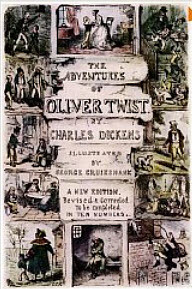 I appreciate the salute Ashlock is making to Kindle Serials, and I want to bullet out for you his smart points:
I appreciate the salute Ashlock is making to Kindle Serials, and I want to bullet out for you his smart points:
Amazon is continuing to open up markets for new forms of storytelling–even if they’re old forms that we’d forgotten.
They did it with the Kindle Singles program, which has sprinting toward 3.5 million short ebooks from a standing start.
They did it with Kindle Direct Publishing, which continues to surface quality storytelling from the self-publishers.
And now Amazon again endorses a new market, this time for the serial work.
This is clear thinking, expertly parsed, something not always available in the industry! the industry! that loves no sport better than the hurling of stones at Amazon.
In a moment, though, I’ll ask you to put aside the Amazonian component of this development, so we can consider not only the rich writerly potential to which Ashlock rightly points, but also some of the technical pitfalls and a potential literary vulnerability I think I see ahead.
We first will quickly review the prime elements of Amazon’s program.
Then we’ll hear from a serialization veteran, Roz Morris.
Then from the data-aware Sarah Kessler.
And finally, I’ll ask you to mull a potential, related concern.
1. The basics on Kindle Serials
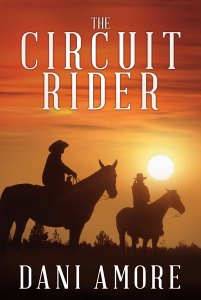 What Amazon is releasing is an initial set of eight Kindle Serials at an introductory price of $1.99. They are:
What Amazon is releasing is an initial set of eight Kindle Serials at an introductory price of $1.99. They are:
The Circuit Rider by Dani Amore
The Many Lives of Lilith Lane by E.V. Anderson
Shop Til You Drop…Dead by Carol Culver
9th Circle by my DBW World Expert Publishing Blog colleague Carolyn McCray and Ben Hopkin
Love is Strong as Death by Carolyn Nash
Option to Kill by Andrew Peterson
Downward-Facing Death by Neal Pollack
Hacker Mom by Austen Rachlis
In an especially nice touch, Amazon is offering free downloads of the serial-novel experience with Charles Dickens’ Oliver Twist and The Pickwick Papers. Seattle is publishing these using recreated covers and original illustrations, and parceling them out in the same installments Dickens issued them. Sweet.
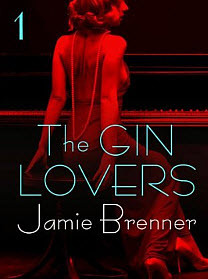 For his part, Ashlock’s agency has an acute interest in this news, which he readily disclaims, although it’s not a direct connection with the Amazon project:
For his part, Ashlock’s agency has an acute interest in this news, which he readily disclaims, although it’s not a direct connection with the Amazon project:
We’re now just a few weeks away from the launch of our virgin serial effort with St Martin’s: Jamie Brenner‘s serial novel The Gin Lovers, an inventive story set against the turbulent and glamorous backdrop of Prohibition and the rise of the jazz age.
And that’s a key reason that Ashlock and his associates are more readily up to speed on the trickiness of serial marketing issues than many others may be. He writes:
Prior to this (Amazon) announcement, you could sell serial novels, of course, but you had to sell each piece individually.
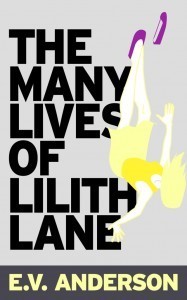 The Amazon apparatus suddenly changes all that, if only for those who are serializing on its program.The Bezosian engines will be roaring with serial installments for customers who have, in fact, subscribed up front, paying a fee for the whole ride of a serial.
The Amazon apparatus suddenly changes all that, if only for those who are serializing on its program.The Bezosian engines will be roaring with serial installments for customers who have, in fact, subscribed up front, paying a fee for the whole ride of a serial.
But outside such a digitally reinforced ride across this Lake Constance of a literary format? Ashlock:
When each installment is a separate sale, there’s a lot of room to lose a reader. Wooing them back for each subsequent release, however well-timed, is a serious challenge.
We know more about this. Read on.
MIND BLOWN “@: Amazon to Reissue Dickens Novels in Original Serial Format http://t.co/ZeQUAULm”;
[image error]September 6, 2012 3:24 pm via Tweetbot for iOSReplyRetweetFavorite
Dan Krokos
2. Roz Morris: Serial Veteran

Roz Morris
Ashlock is echoing the apparently prescient London-based author Roz Morris, who was writing a post about her own serialization experiences when she got word of Amazon’s new effort.
You can see her scrambling at the end of her post, Serialising my novel… what to do when the show is over, to add a footer:
STOP PRESS – just as I put this post to bed, Amazon announced the Kindle Serials Programme. If you are chosen for it, it looks as though this takes a lot of the faff out of it.
But without that program under you?
Nobody knows the faff Morris has seen.
 I watched with interest, one year ago, as she experimented, more graceful under pressure than I’d have been, with the four-part serial release on Amazon of her novel My Memories of a Future Life. This is the book, as Ethernauts will know, with which Morris has been kind enough recently to sponsor the Ether. She writes:
I watched with interest, one year ago, as she experimented, more graceful under pressure than I’d have been, with the four-part serial release on Amazon of her novel My Memories of a Future Life. This is the book, as Ethernauts will know, with which Morris has been kind enough recently to sponsor the Ether. She writes:
Although serialisation was exciting as a launch pad, I’m not sure that readers appreciated being interrupted mid-stream. Some told me they wouldn’t buy until the final episode was up. Others told me they’d knocked stars off their reviews for the inconvenience of waiting.
If anything, having worked very hard to create four discrete sections from what was written as a single, unified novel — in effect, four standalone books — Morris then found herself desperately trying to get the full-volume edition ready.
I released my complete edition as quickly as I could to grab the interested readers before they decided I was making life too difficult for them.
And to this day, there are five versions of My Memories of a Future Life on Amazon, each with its own reviews. This can be confusing to unsuspecting readers who are looking for the complete novel and run afoul of a partial without realizing it.
Here’s what you see when you search for Morris’ book by its title. You’re looking at one complete novel (the top listing) and Parts 1, 2, 3, and 4.
Amazon understood that the complete book had the same content as the episodes, but regards them as different publications and won’t transfer the reviews. That seems entirely fair to me – but it does mean that you launch the full book with a worryingly naked star rating.
When Morris released the full book, about a month after the first installment ran, she had some strong reviews and high star ratings — but only on the separate sections. The whole novel had to start at ground zero with readers and gain its own responses.
Suffice it to say — and as I think Ashlock and his team will agree — should you feel inspired by the advent of Kindle Singles to rush out and do a little serialization of your own, do read Morris’ post first and realize that the “faff” she struggled with last fall is all yours to surmount, unless your effort becomes part of Amazon’s new program.
Now, let’s move to another viewpoint.
Amazon’s revival of the serial novel is very interesting. Goes with Kindle Singles as exploring how the form can be changed with digital
[image error]September 6, 2012 2:11 pm via Twitterrific for MacReplyRetweetFavorite
Benedict Evans
3. Sarah Kessler: Little Dorrit’s Data?
Throughout its 17-year history, Amazon has helped change the way that books are sold, the format in which they’re read andhow they are published. Now it could change how they’re written.

Sarah Kessler
That’s Sarah Kessler writing at Fast Company, her article is headlined Amazon Changed Reading. Now It Could Change Writing.
Among responses I’ve seen — and I’d like to thank Jenn Webb at O’Reilly Media’s radar program for flagging Kessler’s write — this one comes the closest to voicing my concern.
Here’s Kessler, emphasis mine:
Dickens didn’t have the Internet. Or data about how readers responded to each of his chapters.
“[Kindle Series] Authors will be able to follow along with reader reaction and adapt the next installments based on the first ones,” Bezos said.
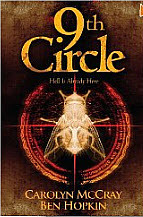 Don’t worry that it’s Jeff Bezos or Amazon talking, my point is larger, and the authors involved are lucky to be with a company like Amazon that can pull this off.
Don’t worry that it’s Jeff Bezos or Amazon talking, my point is larger, and the authors involved are lucky to be with a company like Amazon that can pull this off.
In fact, let’s hear this from the press release on the serials, a little different wording, same emphasis from me:
Readers can also join the conversation on Amazon discussion boards as the stories unfold – allowing the authors to learn from readers in real-time and perhaps influence a story’s path.
One more time, here is the very able Jeff Belle, VP of Amazon Publishing, talking it this way in the release, me doing the underlining again:
Readers can discuss the stories on Amazon discussion boards as they’re being written – like virtual water cooler conversations – perhaps even influencing where the next episode may go.
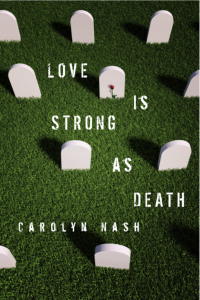 Let’s go back to Kessler at Fast Company:
Let’s go back to Kessler at Fast Company:
Publishing one segment at a time will enable authors, like app developers, to make decisions based on user activity. Data analytics will push that ability to another level. Do readers have high drop-off rates when a certain character appears? Maybe he should appear less in the next episode. Do they share a certain idea with their social networks? Maybe that idea comes up again.
Feel that chill? More Kessler:
Digital has transformed all media to some extent. News is a different beast online.
And there it is.
Kindle Serial is brilliant.
[image error]September 6, 2012 2:10 pm via MetroTwitReplyRetweetFavorite
James Kendrick
4. Doubt Amid the Data
One of the reasons I’m not a great believer in crowd-sorcery is the effect that crowd-sourcing has had on the news media.
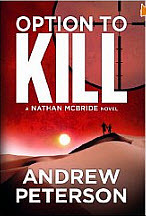 By the time advertising pressure and digital capability colluded to cause editors to choose coverage based on what readers wanted — rather than on journalistic importance — the newsrooms of my own career had changed forever. I can grossly simplify the issue for you in four words: Security Council versus Bieber.
By the time advertising pressure and digital capability colluded to cause editors to choose coverage based on what readers wanted — rather than on journalistic importance — the newsrooms of my own career had changed forever. I can grossly simplify the issue for you in four words: Security Council versus Bieber.
And when your readership is at that virtual water cooler, giddy about the latest installment in a given serial, suggesting that this character be killed off or that character have sex with the other one … does it start to feel like something about Twilight characters and fan fiction? And does the area between author intent and reader “interaction” get a few more shades of fuzzy?
The quick research I’ve done indicates that Dickens did indeed incorporate some reader reactions into serial installments as he went along. But this was, perhaps, a friend or family member, a business associate, a chat over luncheon. Not a global digital forum.
Kessler writes this:
Amazon publishers are currently little better off than Dickens in the data department. Amazon only gives them access to data regarding sales figures and royalties.
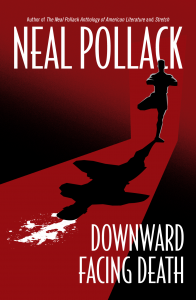 She goes on to mention startups working on deeper data, including Hiptype, with which we’re familiar, of course.
She goes on to mention startups working on deeper data, including Hiptype, with which we’re familiar, of course.
But with discussions in progress among readers, those Amazon publishers will have much more input to work with, with or without the help of startups.
Maybe we simply need to agree that this sort of writing — and reading — establishes itself, of necessity, as a class by itself.
Maybe the reader-”influenced” serial novel is just that. We enjoy it for what it is, celebrate the data and the formidable genius of Amazon that make this possible.
Kessler, it turns out, had another story queued up at Fast Company: Closer Look at Amazon’s New Kindle Series: Part Dickens, Part TV.
In that one, she looks at “a literary studio for digital serial novels called Plympton.” Not a publisher but a “studio,” please, Plympton has published — or studio-ed — three of the eight initial Kindle Serials.
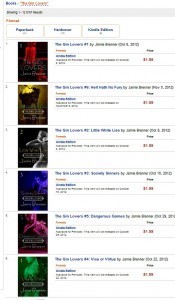
Jamie Brenner’s “The Gin Lovers” serial is being prepared on Amazon for an October 8 release of Part 1. Not a Kindle Serials project, note how much this looks like Roz Morris’ array of serial installments online.
And Kessler, in talking to the three authors involved — Anderson, Rachlis, and Amore — writes:
All of them we spoke with say (writing serial fiction is) different than writing a book.
Now, that’s an interesting line, isn’t it?
Kessler and the authors seem to want to compare this work to television and film. Rachlis notes that the episodic element makes it closer to TV.
And Plympton editor and co-founder Yael Goldstein Love lets Kessler know that, in fact, two of the three serials from her shop are already finished — not much room for reader influence there.
Nevertheless, Kessler writes:
Plympton is taking the idea of reader input a step further and allowing anyone who pledges $25 or a more in its Kickstarter campaign to become a voting member of its advisory committee.
Author Dani Amore seems to be a bit more cautious about reader input:
“How much I’ll factor it in, subconsciously or not, I don’t know,” Amore says about reader feedback. “I’ll definitely try to read it and see what happens.”
And maybe it’s for the best if serial authors think of what they’re doing as “different from writing a book.”
The strongest material in literature probably has not been written by committee, nor voted up or down by Kickstarter committee.
We’ll just keep our eyes open, if that’s OK with everyone.
Because sure, these are serials. Fun stuff. Nobody said we’re going to build a better Michael Cunningham or Ian McEwan or Andrew Miller or Ann Patchett, did they?
After all, serious literature will never be compromised by this kind of audience-influenced entertainment.
That’s what we said about the news, too.
How do you feel about the reader-input part of the new efforts in serialization? Does it sound like a healthy trend that brings writers and authors together? Or can you see situations in which expectations of readership influence could compromise a writer’s control of her or his own material?
Join us Thursdays at JaneFriedman.com for Writing on the Ether, presented this week by Ether sponsors Darrelyn Saloom, and Dave Malone, whose Seasons in Love is a recent release; and, starting Thursday, by Guy LeCharles Gonzalez, author of Handmade Memories: Poems and Essays, 1997-2011.
The books you see here have been referenced recently in Writing on the Ether and/or installments of Extra Ether.
I’m bringing them together in one spot each week, to help you recall and locate them, not as an endorsement. And, needless to say, we lead our list weekly with our fine Writing on the Ether Sponsors, in gratitude for their support.
Writing on the Ether Sponsors:
Handmade Memories: Poems and Essays, 1997-2011 by Guy LeCharles Gonzalez
Seasons in Love by Dave Malone
My Call to the Ring: A Memoir of a Girl Who Yearns to Box by Deirdre Gogarty with Darrelyn Saloom (Glasnevin)
My Memories of a Future Life by Roz Morris (Red Season)
Prophecy, An ARKANE Thriller by J.F. Penn (The Creative Penn)
The Prodigal Hour by Will Entrekin (Exciting Press)
Perfect Skin by Nick Earls (Exciting Press)
Rumors of Water: Thoughts on Creativity & Writing by L.L. Barkat (T.S. Poetry Press)
American Isis: The Life and Art of Sylvia Plath by Carl Rollyson
The Blind Giant: Being Human in a Digital World by Nick Harkaway
Book: A Futurist’s Manifesto edited by Hugh McGuire and Brian O’Leary
The Boy in the Suitcase by Lene Kaaberbøl and Agnete Friis
Dana Andrews: Hollywood Enigma by Carl Rollyson
The Dark Chronicles: A Spy Trilogy by Jeremy Duns
Drinking Diaries: Women Serve Their Stories Straight Up by Caren Osten Gerszberg & Leah Odze Epstein
A Dyeing Shame by Elizabeth Spann Craig
Great Philosophers Who Failed at Love by Andrew Schaffer
The Life and Opinions of Tristram Shandy, Gentleman by Laurence Sterne
Nail Your Novel by Roz Morris
Outside In by Harley Manning and KerryBodine
Proofiness: The Dark Arts of Mathematical Deception by Charles Seife
The Rapture of the Nerds by Cory Doctorow and Charlie Stross
Turning Pro by Steven Pressfield
Veniss Underground by Jeff Vandermeer
Why Have Kids? by Jessica Valenti
Writing 21st Century Fiction by Donald Maass
Fascinating how 19th C serialisation comes into play in the digital age http://t.co/glt19ONH via @
[image error]about 2 hours ago via webReplyRetweetFavorite
Hachette India
Images: iStockphoto / Main: 4×6
Jane Friedman
- Jane Friedman's profile
- 1882 followers












